Embarking on the quest for the perfect sleep? Let’s talk about organic mattresses. I remember my own switch to an organic mattress — it was a game-changer for both my sleep quality and eco-conscious lifestyle.
So, what exactly makes a mattress “organic”?
It’s not just about slapping a green label on it and calling it a day. No, it’s a careful symphony of natural materials, ethical manufacturing, and certifications that assure you’re sleeping on something genuinely good for you and the environment.
In this guide, we’ll explore what truly makes a mattress organic. It’s more than just a label; it’s about natural materials, ethical making, and the right certifications. Whether you’re a side sleeper, dealing with back pain, or just in search of the ideal mattress size, I’ve got the insights you need.
We’ll dive into materials, firmness levels, and how to pick the best option for your health and the planet. So, buckle up, and let’s discover the world of organic mattresses.
What Makes a Mattress Truly Organic?
Have you ever wondered what sets an organic mattress apart from the regular ones crowding store windows? It’s like comparing a homegrown tomato to a store-bought one – the difference is in the quality, care, and ingredients.
An organic mattress is a mattress made from natural materials that are grown or produced without harmful chemicals, pesticides, or synthetic processes.
These materials typically include organic cotton, natural latex, and wool, ensuring the mattress is eco-friendly, sustainable, and free from toxins that can be found in conventional mattresses. It’s where eco-friendliness meets sleep!
Key Materials Used in Organic Mattresses
Picture this: You’re lying on a bed made of the purest, most natural materials. That’s the essence of an organic mattress.
Here’s a quick look at the stars of the show:
- Organic Cotton: Breathable and soft, it's the gentle hug you need at night.
- Natural Latex: Extracted from rubber trees, it adds a bouncy, supportive feel.
- Wool: Nature's own temperature regulator, keeping you cozy in winter and cool in summer.
| MATERIAL | DURABILITY | COMFORT | ECO-FRIENDLINESS |
|---|---|---|---|
| Organic Cotton | High | Soft | Very High |
| Natural Latex | Very High | Supportive | High |
| Wool | Moderate | Cozy | High |
Each of these materials brings something unique to your sleep experience, from the cloud-like softness of cotton to the resilient support of latex.
Organic Mattress Certifications Explained
Global Organic Textile Standard (GOTS)
Ever wondered what really goes into your mattress?
Well, let’s dive into the world of organic bedding with the Global Organic Textile Standard, or GOTS for short. It’s like the superhero of mattress certifications – ensuring that a whopping 95% of your mattress is made from organic materials.
And it’s not just about what’s in there; it’s also about what’s not. GOTS draws the line on some no-nos, like polyurethane and chemical flame retardants – the stuff you definitely don’t want to cozy up with at night.
Global Organic Latex Standard (GOLS) Explained
Now, let’s talk about the Global Organic Latex Standard, or GOLS, for those in the know.
This standard takes a magnifying glass to latex mattresses, ensuring that at least 95% of it is organic latex. Just like its cousin GOTS, GOLS keeps a tight leash on the remaining 5%, making sure only the good stuff makes the cut.
For those who adore natural latex mattresses, here’s some exciting news – many of these comfy beds come with not just one, but both GOTS and GOLS labels. It’s like getting a double seal of approval for your peaceful, eco-friendly slumber.
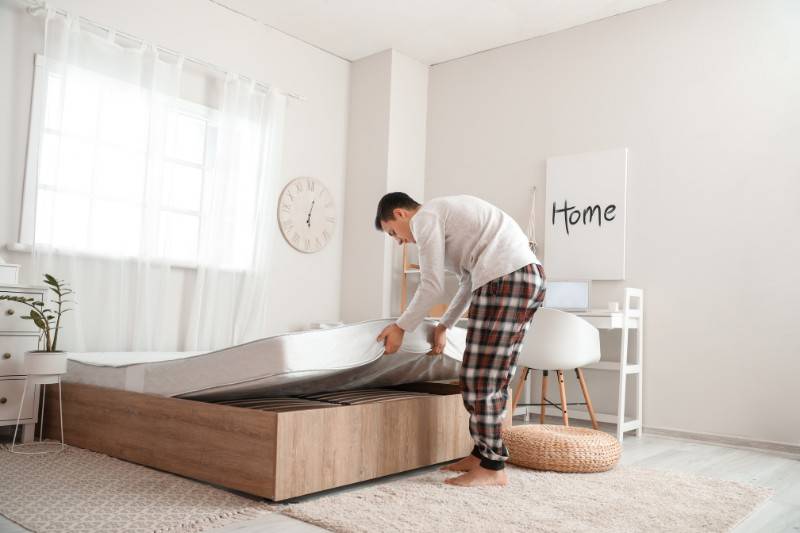
The Eco-INSTITUT
Have you ever heard of the Eco-INSTITUT in Cologne, Germany? Think of it as a guardian angel for your home’s air quality. With over a quarter-century of experience, this independent organization is like a detective, meticulously testing products for even the smallest traces of pollutants and emissions.
It’s their mission to ensure that when you bring a product into your home, it’s clean and safe, free from any unwelcome chemical surprises.
When you see a product with the Eco-INSTITUT certification, it’s like getting a green light for health and safety. This certification means no hazardous chemicals, no unwanted odors – just peace of mind. They’re especially strict about nasty stuff like volatile organic compounds (VOCs), phthalates, formaldehyde, pesticides, heavy metals, and persistent organic pollutants. These are the hidden villains in many products, and the Eco-INSTITUT is committed to keeping them at bay.
In fact, when it comes to thoroughness, the Eco-INSTITUT goes even further than other certifications like GOTS. It’s like having a higher level of assurance.
Take, for example, the Botanical Bliss by Plushbeds – one of our absolute favorite mattresses. It proudly bears the Eco-INSTITUT certification, a testament to its purity and quality.
Oeko-Tex Standard 100
The Oeko-Tex Standard 100 is like a watchdog for your home, setting strict limits on nasty chemicals like formaldehyde and those sneaky volatile organic compounds (VOCs). Plus, it’s got a no-go list for certain chemical flame retardants, colorants, and allergenic dyes that can cause all sorts of trouble.
But here’s a little insider info – Oeko-Tex doesn’t really tell us if the materials are organic or sourced sustainably. And sometimes, it’s a bit of a puzzle to figure out if the certification covers the whole product or just a part of it.
Now, let’s talk about mattresses. If you see one with the Oeko-Tex certification, it might not have made the cut for the more stringent standards like GOTS, GOLS, or Eco-INSTITUT. Think of Oeko-Tex as a heads-up – a sign that a product might not be as green as it looks at first glance. Latex for Less is one of the brands with a Oeko-Tex certification.
The certification process for Oeko-Tex is pretty thorough. They check for a whole bunch of unwelcome guests, like hazardous chemicals, pesticides, phthalates, lead, arsenic, and other heavy metals. So, if a mattress boasts this certification, you can rest easy knowing it’s free from:
- Chlorinated phenols
- Carcinogenic and AZO dyes
- Allergy-inducing dyes
- VOCs
Remember, the Oeko-Tex Standard 100 Certification is a choice companies make, and they need to renew it every year. So, if you stumble upon an outdated certificate on a website, don’t write them off just yet. It might be worth shooting them a message to see if there’s an updated certificate hanging around.

The Made Safe Certification
Have you heard about Made Safe? It’s a fresh face on the block, having kicked off in 2015. Until now, only a few mattress companies have managed to nab this impressive certification. What makes it stand out? It’s all about championing human health and being kind to our ecosystem.
This independent certification doesn’t just play it safe; it plays it scientific. Imagine a list of over 6,500 no-no substances – that’s what Made Safe checks against. But it’s more than just avoiding the bad stuff. This certification is about celebrating products that are genuinely harmless to both people and the planet.
Here’s something to wrap your head around: Made Safe’s Red List of restricted substances is way bigger than the European Union’s list and hundreds of times more extensive than what the U.S. Food & Drug Administration and the Environmental Protection Agency put together.
But Made Safe doesn’t just stop at a list. It demands full transparency from manufacturers and takes a deep dive into how a product might affect everything – from the soil and water to the air we breathe, and even the wellbeing of humans, aquatic, and land creatures.
The all-clear from Made Safe means you won’t find any of the following in a product:
- Known or suspected carcinogens
- Endocrine disruptors
- Toxins that could impact your brain, behavior, development, reproduction, or genes
- Hazardous flame retardants
- High-risk pesticides
- Nasty toxic solvents
- Harmful VOCs
Greenguard and Greenguard Gold
When you’re out shopping for eco-friendly products, you’ve probably come across the Greenguard certification. It’s like a seal of approval for products that keep their indoor air emissions low, especially those pesky volatile organic compounds (VOCs) and formaldehyde. Now, there’s also Greenguard Gold, which is even stricter about those emissions.
Both of these standards come from UL Environment, with Greenguard even teaming up with ANSI to become an official standard-setter. But here’s something to keep in mind: these certifications don’t necessarily mean a product is completely free from toxic chemicals. They also don’t touch on social or animal ethics.
Let’s look at an example. OMI’s mattresses – they’re not just Greenguard Gold certified; they also meet the U.S. Environmental Protection Agency’s standards for indoor air quality. That’s like a double win! And guess what? You can actually see a breakdown of their mattress emissions on the UL/Greenguard website.
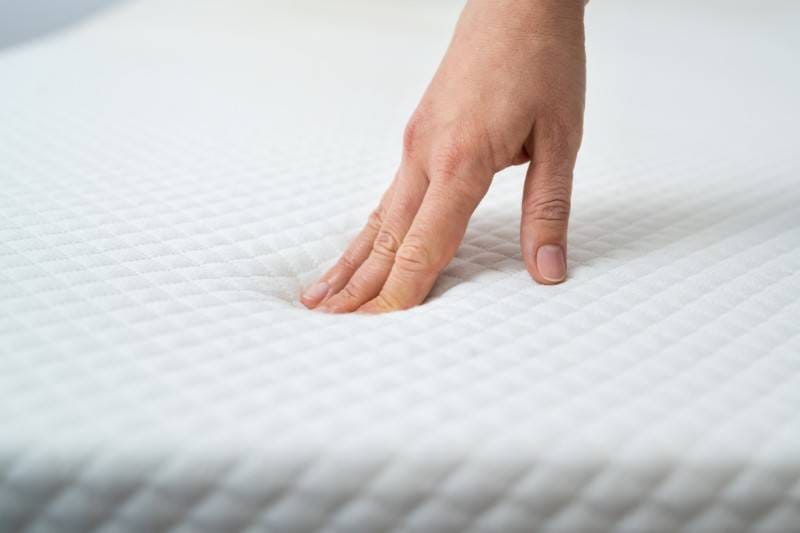
But here’s a trend I’ve noticed: the number of organic, non-toxic mattresses in the U.S. with just Greenguard certification seems to be dwindling. It’s not that they’re not qualifying; in fact, it’s quite the opposite.
The mattress industry is on a journey toward sustainability and safety. More and more companies are aiming for the stars with certifications like GOTS or Made Safe. These are the big leagues of eco-friendly credentials. And here’s the kicker: Greenguard is a pretty pricey certification. So, if a company already has GOTS or Made Safe, they might skip Greenguard since they’ve already proven their commitment to a healthier planet.
Exploring Types of Organic Mattresses
Choosing an organic mattress can feel like walking into an artisanal coffee shop – there are so many options, each with its unique flavor! Just like you select your coffee based on taste and mood, selecting the type of organic mattress depends on your comfort preferences and sleep needs.
Let’s dive into the world of organic mattress types, unraveling their pros and cons, much like unraveling the mysteries of your favorite coffee beans:
Innerspring Mattresses
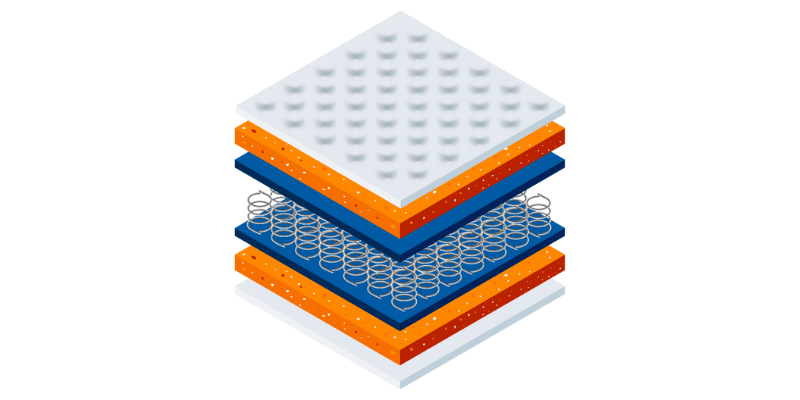
Remember the traditional spring mattresses? The innerspring is their eco-friendly cousin. They come with coils for support, topped with layers of natural materials for comfort. It’s like having a classic dish but with an organic twist.
Latex Mattresses
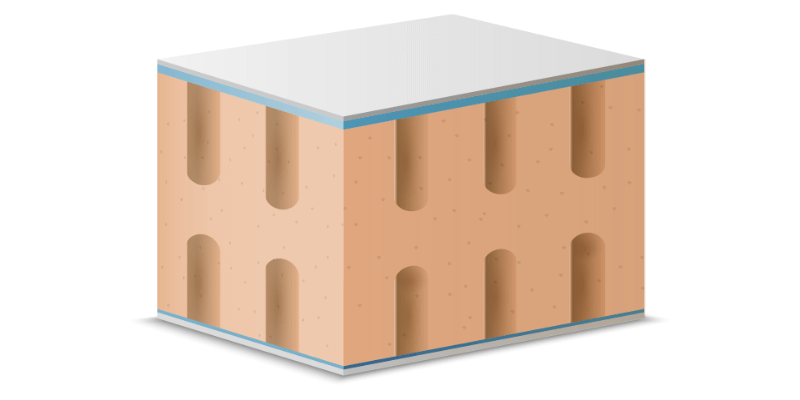
Derived from the sap of rubber trees, natural latex mattresses are the epitome of sustainability. They’re like the whispering willows of the mattress world – flexible, resilient, and naturally comforting. Plus, they’re great for those who want a bit of bounce without the synthetic feel.
Memory Foam Mattresses
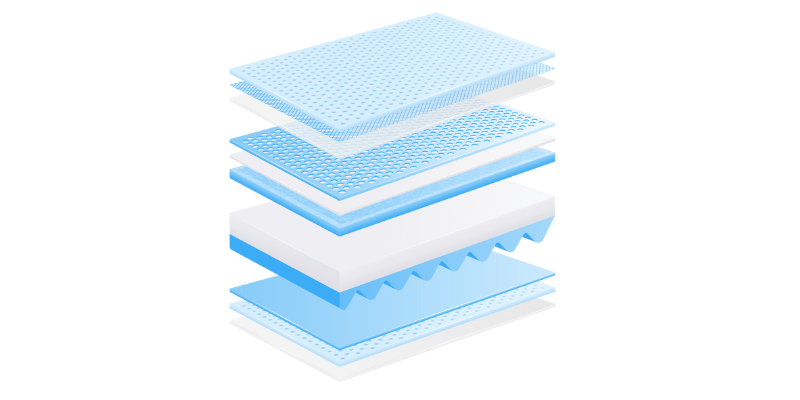
Now, these are interesting!
Imagine memory foam, but instead of synthetic materials, it’s made using natural oils and substances. These mattresses adapt to your body shape, much like a gentle stream that molds to the contours of the land. Ideal for those seeking a personalized sleep experience.
Hybrid Mattresses
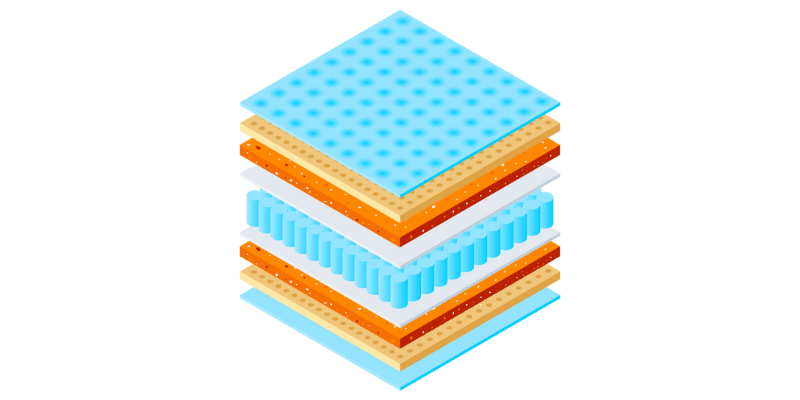
The hybrids are the adventurers of the mattress world – combining the support of innerspring with the comfort of foam or latex. It’s like hiking through a forest and stumbling upon a beautiful meadow; you get the best of both terrains.
Each type of organic mattress brings its own flavor to your sleep. It’s about finding which one aligns with your body’s needs and your environmental values.
Whether you prefer the sturdy support of innerspring, the natural resilience of latex, the contouring comfort of memory foam, or the best-of-both-worlds approach of hybrids, there’s an organic mattress out there that’s just right for you.
Finding the Perfect Mattress for Your Sleep Style
Ever woken up feeling like you’ve run a marathon instead of catching Z’s?
That’s your body’s way of saying, “Hey, we need to talk about your mattress and pillows!” If you’re dealing with neck and shoulder pain, your pillows might be the culprits. But if it’s back pain or other aches, it might be time to reevaluate your mattress.
When you snooze, your spine needs the right mix of support and softness. Imagine a balance – on one side, you’ve got mattress firmness for spinal support, and on the other, a bit of softness for those tender pressure points.
Now, think about how your spine looks when you stand up straight – it’s pretty much in line, right? That’s what you want when you’re lying down too, except for that natural curve in your lower back.
Pressure points like shoulders, hips, or knees really feel the brunt of it if your mattress isn’t just right. These are the spots that dig into the bed, and they vary based on how you sleep. For the side-sleepers out there, especially if you’ve got hip pain or a grumpy shoulder, a too-firm mattress can make things worse. (Pro tip: maybe give that side a break until things feel better.)
Some mattresses have what they call “zoned” layers – firmer here, softer there, especially in the lower back area. But here’s the thing: you need to actually lie on the mattress to see if this feature is more than just fancy talk. Everyone’s different – your height, weight, and even your favorite sleep position (starfish, anyone?) play a part.
The Best Mattress for Back-Sleepers: Finding Your Comfort Zone
Do you love to sleep on your back?
If that’s your go-to snooze position, you’re likely on the hunt for that Goldilocks mattress – not too hard, not too soft. A medium-firm mattress could be just what you need. It’s the sweet spot that keeps your spine happy and gives your lower back, hips, and shoulders the comfort they crave.
Next time you’re testing out a mattress, ask a friend to snap a photo of you lying on it. You’ll want to see if you can draw an imaginary straight line from your neck, through your lower spine, right down to your knees.
And don’t forget the ‘hand test’ – try sliding your hand under your lower back. If it fits snugly, bingo! That’s the support you’re looking for. Too tight? The mattress might be too soft for you. Too much space? Then it’s probably too firm.
Oh, and if you’re shopping around for a new mattress because of back and neck aches, here’s something to consider – it might be your pillow playing the villain. As a back-sleeper, you don’t need a mountain of loft. An adjustable shredded-foam pillow can be a game-changer, letting you tweak and remove filling until you hit your perfect pillow sweet spot.
For Side-Sleepers: Picking the Perfect Mattress
Are you a fan of sleeping on your side? It’s a cozy way to spend the night, but it also means you need a mattress that hits the sweet spot of cushioning. Imagine a mattress that’s just right – not too hard, not like a cloud, but somewhere in between. That’s what you’re aiming for to keep your hips and shoulders happy.
Most side-sleepers find their dream mattress in the medium-soft to medium range. But hey, everyone’s different! If you’re a side-sleeper who needs more support or isn’t a fan of that memory foam hug, a slightly firmer mattress might be your match.
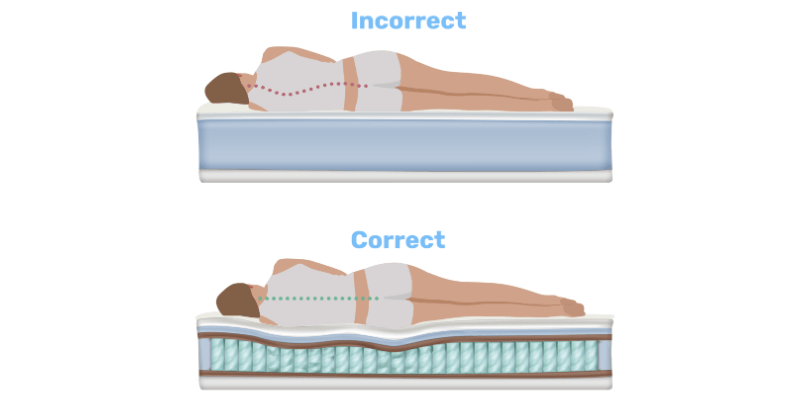
Again, you should get someone to take a photo of you from behind while you’re lying on it. You’re looking for a straight line from the middle of your ears straight through your shoulders and hips. If you feel like you’re sinking too much at the hips or shoulders, it’s a sign you might need a firmer mattress.
And for those who love a bit of customization, consider this: a medium-firm to firm mattress topped with a comfy mattress topper could give you that perfect blend of support and softness.
Choosing the Right Mattress for Stomach-Sleepers
Do you find yourself drifting off to dreamland on your stomach? If that’s your go-to sleep position, you’ll want to look for a mattress that’s on the firmer side of medium-firm.
Why? Because it’s all about giving your chest, belly, hips, and knees the right amount of support while making sure your spine stays in line.
The deep sink you get in all-foam mattresses might feel like a cloud, but it can be a bit too much for your lower back. At the same time, you don’t want to feel like you’re lying on a board where your ribs or other body parts press uncomfortably into the mattress. If that’s the case, you might lean towards a medium-firm mattress that offers a tad more cushioning.
Just like I mentioned, have someone take a side photo of you on the mattress. You’re aiming to see a straight line from your neck, through your lower back, down to your knees. If your lower back is curving too much, or if it feels like gravity’s having a field day with your belly, it’s a sign to go for a mattress with more support.
Sizing Up: Choosing the Right Mattress Size
Ever felt like you’re either hanging off the edge of your bed or lost in an ocean of mattress space? Picking the right mattress size is like choosing the perfect pair of shoes – it needs to fit just right for maximum comfort.
When it comes to organic mattresses, you have a variety of sizes to choose from, each catering to different needs and room sizes.
Let’s walk through them:
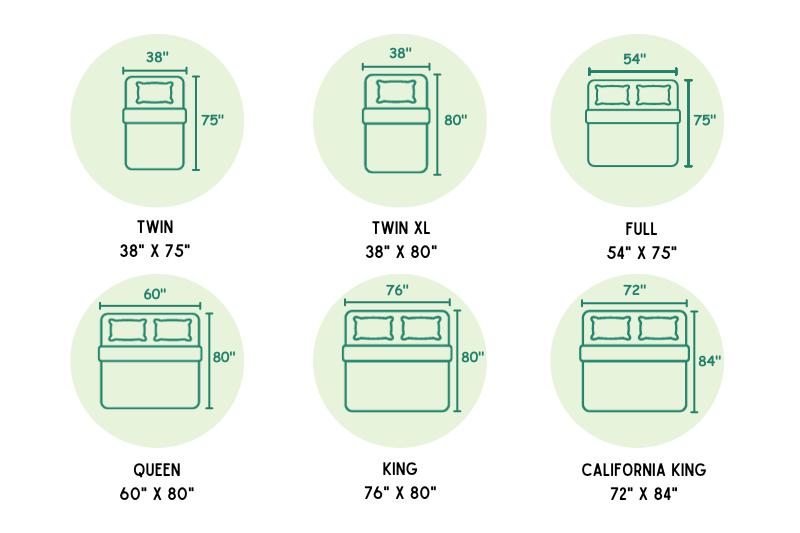
- Twin: Ideal for kids or single sleepers in smaller rooms. It’s like having a cozy solo space that fits just about anywhere.
- Twin XL: A bit longer than the twin, perfect for taller teens or adults in compact spaces. Think of it as the twin’s taller sibling.
- Full: Great for single sleepers who love extra space or a cozy fit for couples who like to snuggle up close.
- Queen: The most popular size, offering ample space for couples without taking over the entire room. It’s like the jack-of-all-trades in mattress sizes.
- King: Spacious luxury for couples, offering plenty of room for both to stretch out. It’s like having a personal sleep kingdom.
- California King: Longer and a bit narrower than the king, tailor-made for taller folks who need those extra inches for their legs.
Choosing the right size isn’t just about measuring your room. Think about your lifestyle too. Do you have kids or pets who like to hop in bed with you? Are you a single sleeper who loves sprawling out? Or maybe you’re a couple needing your own space while sleeping. Your mattress should accommodate not just your body, but your life.
And remember, a mattress is a long-term investment. Consider future scenarios too, like moving to a new place or changes in your family size. What fits your life now should also be able to adapt to your tomorrow.
The Link Between Mattresses and Back Pain
Have you ever woken up feeling like you’ve done a workout in your sleep?
That’s often your mattress sending a not-so-subtle message. The connection between mattresses and back pain is like a delicate dance – get the steps wrong, and you’re in for an uncomfortable tune.
The wrong mattress can be a real pain in the back, literally. If it’s too soft, your spine sags. Too firm, and it presses against your spine’s natural curve. It’s all about finding that sweet spot – a mattress that supports without pushing back.
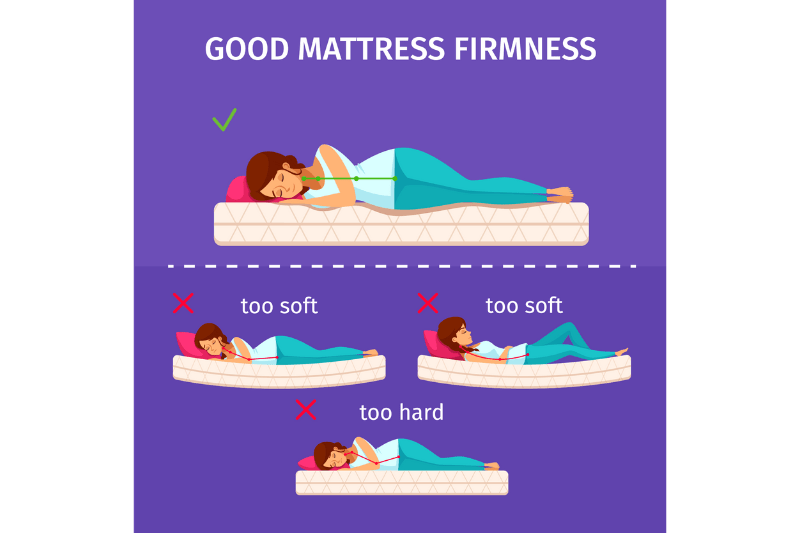
If you’re dealing with back pain, the right mattress can be a big help.
Look for one that combines some foam for pressure relief and medium firmness for support. I’ve read studies and talked to doctors who confirm that the right mattress can significantly improve back pain, stiffness, and sleep quality.
Tips for Choosing a Mattress for Back Pain Relief:
- Look for Medium Firmness: Generally, a medium-firm mattress is a good bet. It’s like a supportive friend – there for you, but not overly intrusive.
- Consider Your Sleeping Position: Side sleepers might need a softer mattress to cushion hips and shoulders, while back sleepers may benefit from firmer support.
- Test for Comfort: If possible, give the mattress a test sleep. Your back will be the best judge.
Special Considerations for Specific Needs
Not all sleepers are created equal – and neither are mattresses. Let’s look at some specific needs:
- For Hot Sleepers: If you find yourself overheating at night, look for a mattress with good breathability, like those with natural latex or innerspring systems. Think of it as breathable running shoes for your sleep.
- For Those with Allergies: Organic materials are naturally hypoallergenic. Organic cotton or wool can be like a breath of fresh air for your sleep.
- For Heavier Individuals: A firmer mattress can offer the support needed, preventing the 'sink-in' feeling. It's like a sturdy pair of hiking boots supporting you on a rugged trail.
Remember, choosing the right mattress for your specific needs is like choosing the right gear for a hike – it can make the journey comfortable and enjoyable, or the exact opposite. Listen to your body, consider your individual needs, and you’ll be on your way to a pain-free, restful sleep!
Navigating Mattress Trial Periods
Picture this: You’re in a store, lying on a mattress for a few minutes, trying to decide if it’s going to be your sleep partner for the next decade. Sounds tricky, right? That’s where mattress trial periods come to the rescue, much like a ‘try before you buy’ for your sleep!
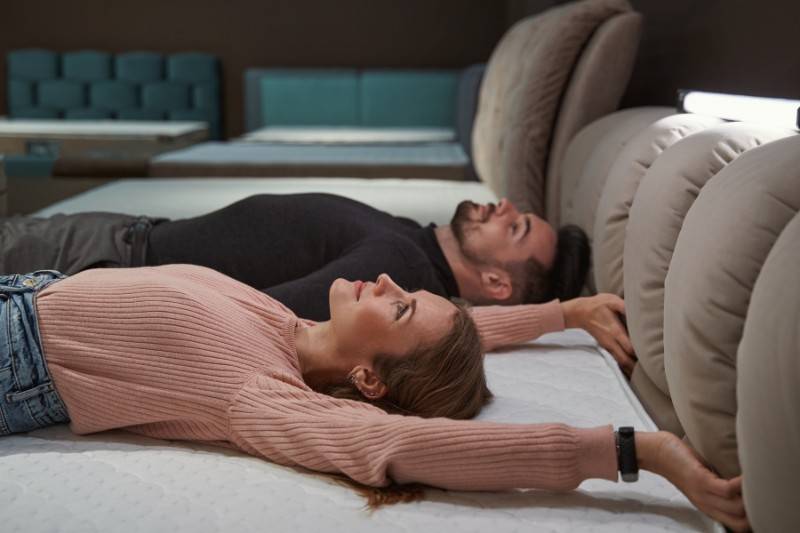
A mattress trial period is like a test drive for your mattress. It’s a set amount of time offered by the manufacturer during which you can use the mattress at home and return it if it doesn’t meet your expectations. It’s the sleep world’s way of saying, “Make sure you love it!”
Insights into the Ideal Trial Period Length and What to Look For:
- Look for Generous Trial Periods: Ideally, a trial period should be long enough for you to fully adjust to the mattress. This is usually around 100 nights, giving you ample time to decide.
- Understand the Return Policy: It’s like knowing the exit routes in a maze – make sure you know how to navigate the return process if the mattress isn’t right for you.
- Pay Attention to Your Body’s Signals: Notice how you feel when you wake up. Are you feeling refreshed or achy? It’s like listening to feedback from a reliable friend – your body.
Remember, a mattress is a long-term relationship, not a fling. The trial period is there to ensure you’re making a commitment that’s comfortable, supportive, and, most importantly, right for you.
Addressing Health Concerns and Allergies
Imagine sleeping on a bed that’s as nurturing to your health as a homemade, organic meal. That’s the essence of choosing a mattress that’s hypoallergenic and non-toxic, especially if you have allergies or health concerns.
It’s like choosing a meal that not only satisfies your hunger but also nurtures your well-being.

Mattresses made with hypoallergenic and non-toxic materials are the unsung heroes for allergy sufferers. These materials reduce the likelihood of allergic reactions, which can range from pesky sneezes to serious respiratory issues. It’s like having a shield that guards you against invisible nightly foes.
How to Verify Hypoallergenic and Non-Toxic Properties in an Organic Mattress:
- Check the Materials: Start by examining what the mattress is made of. Organic cotton, wool, and natural latex are typically hypoallergenic. It’s like reading the ingredients list on your favorite health foods.
- Look for Certifications: Certifications like GOTS (Global Organic Textile Standard) and GOLS (Global Organic Latex Standard) aren’t just fancy acronyms. They’re your assurance that the mattress meets stringent organic and non-toxic standards.
- Do Your Research: Sometimes, the best way to verify these properties is by doing a little detective work. Read reviews, ask questions, and don’t hesitate to contact the manufacturer for more information. It’s like doing background checks on a new babysitter.
Conclusion: Embracing the Journey to Your Perfect Organic Mattress
And there you have it – your roadmap to navigating the lush landscape of organic mattresses. From understanding what makes a mattress truly organic, to finding the perfect type and size, and even unraveling the nuances of firmness and health considerations, we’ve journeyed through it all. It’s been like a treasure hunt, where the prize is your ideal sleep sanctuary.
Choosing an organic mattress isn’t just a purchase; it’s a commitment to healthier sleep and a healthier planet. It’s like planting a tree – the benefits grow over time, impacting not just your sleep but your overall well-being and the environment.
Whether you’re a side sleeper needing a plush surface, a back pain warrior seeking support, or an eco-conscious shopper aiming for sustainability, there’s an organic mattress out there waiting for you.
As we draw the curtains on this guide, remember that the perfect mattress is the one that meets your unique needs. So, take your time, do your research, and don’t forget to enjoy the journey. After all, at the end of the day (quite literally), it’s about finding that cozy spot where you can lay back, relax, and drift off into a world of peaceful, rejuvenating sleep.
Happy mattress hunting, and here’s to sweet dreams on your new organic mattress!

